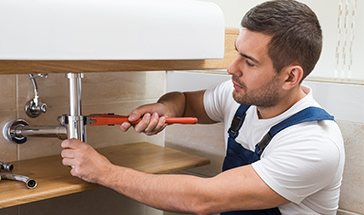Push-Fit Plumbing
More and more homeowners realize the benefits of push-fit plumbing fittings. Unlike PVC and CPVC pipes that you have to glue using solvent or soldering copper pipes using a torch, push-fit fittings are easier to use, do not need to use solvents or torches, and can be done even by first-timers.
These are available in most home improvement and hardware stores. Some professional plumbers in your area may also be recommending this type of fittings for faster pipe installation. Here are other things you need to know about push-fit fittings and why it is a good choice for your plumbing needs.
How push-fit plumbing fittings are used
Experts recommend using push-fit fitting when making joints for different pipe materials. Push-fit fittings are the easiest, fastest, and safest way to connect pipes. These are other push-fit fitting brands available that you can choose from. Regardless of your preferred brand, all push-fit plumbing fittings do the job to ensure a good fit for your piping system.
Popular push-fit fittings usually have three major parts: the O-ring, a collet, and a locking mechanism. The O-ring ensures a waterproof seal; the collet has metal teeth that grasp the pipe and the locking mechanism, which helps lock the pipes more effectively and securely.
Push-fit fittings are said to have already existed for three decades. A good push-fit plumbing fitting should work well with different pipe materials such as copper, PEX, and CPVC.
Push-fit plumbing fittings: Pros and cons
Push-fit plumbing fittings have several benefits, which are the following:
-
- It is easy and fast to connect, especially during emergencies.
-
- It is also easy to remove and reposition as necessary.
-
- No need to solder, use solvent, unions, or clamps to connect the fittings to the pipe
-
- No need to be perfectly dry when using it, unlike when you use PVC, CPVC, or copper that you have let it dry completely first before gluing or soldering using a torch
-
- It is available in different sizes suitable for your intended application.
On the contrary, not all plumbers recommend using push-fit fittings. They believe that the fittings are not strong and durable, unlike those that require soldering and gluing. It depends on your choice – all fitting options are useful, nonetheless.
How to use push-fit plumbing fittings
Here are tips on using push-fit fittings for your pipe connection and installation needs.
-
- Before using push-fit fittings, check whether burrs on the pipe end. Burrs can damage the O-ring, and sealing it may not be as effective and secure. Use a deburring and gauge tool to smoothen and ensure perfect pipe fitting.
-
- Ensure the package label and that the fittings you use and purchase are approved for their intended usage.
-
- Follow the manufacturer’s guide so that your fittings are safe, watertight, and well-secured. Improper fitting installation can cause leaks and other untoward incidents that could damage your pipes and parts of your home. Manufacturers won’t have liability for that, unfortunately.
-
- Don’t use a hacksaw when cutting pipes. Instead, use a pipe/tubing cutter.
-
- It is also a good idea to hire a professional plumber in Franklin, TN, for your plumbing needs.

- It is also a good idea to hire a professional plumber in Franklin, TN, for your plumbing needs.



